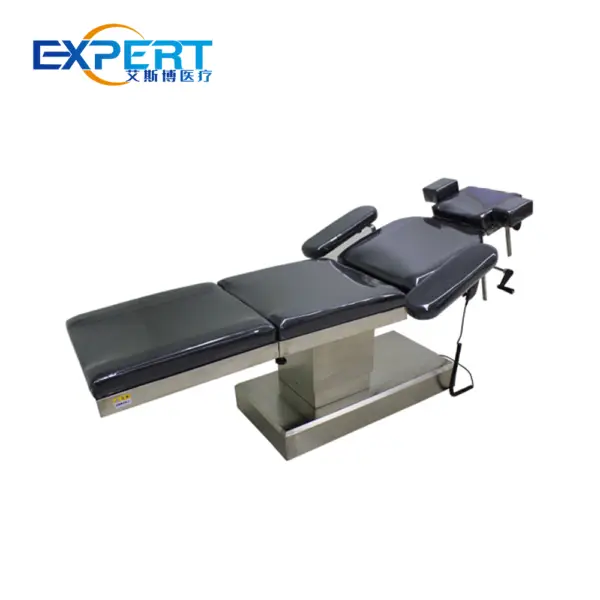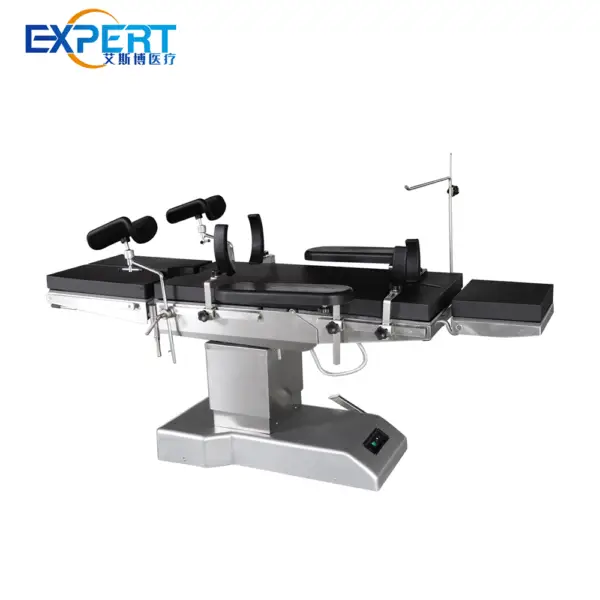Adresse
304, rue Cardinal Nord
Centre Dorchester, MA 02124
Heures de travail
Du lundi au vendredi : 7h - 19h
Week-end : 10h - 17h

Dans un contexte médical moderne en constante évolution, les interventions chirurgicales sont devenues de plus en plus sophistiquées, nécessitant un équipement de pointe pour garantir des résultats optimaux aux patients. Parmi les outils essentiels du bloc opératoire, les tables d'opération sont essentielles à la réussite des interventions chirurgicales dans diverses spécialités médicales. Ce blog explore le rôle essentiel des tables d'opération avancées en chirurgie, en examinant leurs caractéristiques, leurs avantages et leur impact sur la prise en charge des patients.
Operating tables have undergone significant evolution over the years, transitioning from rudimentary platforms to sophisticated, multifunctional apparatus. Early operating table were primarily static, offering limited adjustability and ergonomic support. However, advancements in technology have revolutionized this essential surgical equipment, giving rise to a diverse range of options tailored to meet the specific needs of different surgical procedures and patient populations.
Modern operating tables boast an array of innovative features designed to enhance surgical precision, efficiency, and patient safety. These include:
The integration of advanced operating tables into surgical practice has yielded tangible benefits in terms of patient outcomes and procedural efficiency. Several studies have demonstrated:

| Caractéristique | La description |
|---|---|
| Electro-Hydraulic Adjustment | Allows precise positioning of the operating table using electro-hydraulic mechanisms, enhancing surgical access and ergonomic support. |
| Conception radiotransparente | Enables unimpeded imaging during fluoroscopy-guided procedures, facilitating real-time visualization without patient repositioning. |
| Integrated Patient Monitoring | Provides continuous monitoring of vital signs throughout the surgical procedure, enhancing patient safety and facilitating early intervention. |
| Compatibilité avec les accessoires | Accommodates a variety of surgical accessories, such as traction devices and extension modules, to customize the operating table setup. |
| Fonctionnalité de la télécommande | Allows for remote adjustment of table positions and settings during surgery, improving workflow efficiency and minimizing disruptions. |
L'évolution de tables d'opération from basic platforms to sophisticated surgical instruments underscores their indispensable role in modern healthcare. Advanced operating tables equipped with electro-hydraulic adjustment, radiolucent design, integrated patient monitoring, compatibility with surgical accessories, and remote control functionality have revolutionized surgical practice, enhancing precision, efficiency, and patient safety. As technology continues to advance, operating table will undoubtedly remain at the forefront of surgical innovation, contributing to improved outcomes and enhanced patient care.
Q:Are advanced tables d'opération suitable for all surgical specialties?
A:Advanced operating tables are designed to accommodate a wide range of surgical procedures across various specialties, including orthopedics, neurosurgery, cardiovascular surgery, and more.
Q:Do advanced operating tables require specialized training for operation?
A:While familiarity with the features and functions of advanced operating table is beneficial, most models are designed for intuitive operation and come with user-friendly interfaces. Training may be provided by equipment manufacturers or hospital staff to ensure safe and efficient use.
Q:Are advanced tables d'opération cost-effective for healthcare facilities?
A:Despite higher initial investment costs, advanced operating table offer long-term cost savings through reduced surgical complications, shorter recovery times, and enhanced procedural efficiency. Their contribution to improved patient outcomes makes them a valuable investment for healthcare facilities.
Q:Can advanced operating tables be customized to meet specific surgical requirements?
A:Yes, many advanced operating tables are modular in design, allowing for customization with specialized accessories and positioning aids to accommodate the unique needs of each surgical procedure and patient population.
Q:Are there any limitations or contraindications associated with advanced tables d'opération?
A:While advanced operating tables offer numerous benefits, they may not be suitable for all patients or surgical scenarios. Certain medical conditions, physical limitations, or procedural requirements may necessitate alternative positioning or equipment options. It is essential for surgical teams to assess patient suitability and consider individual factors when utilizing advanced operating table.
